Kurnool Tourism offers a captivating blend of history, culture, and natural beauty in Andhra Pradesh, India, and SIXT.VN is here to guide you. From ancient forts and temples to stunning rock formations and serene lakes, Kurnool has something for every traveler. Ready to explore? We’re here to make your journey seamless with our reliable services and local expertise. Start planning your memorable trip with SIXT.VN!
1. Exploring The Historical Significance Of Achyutha Devarayala Buruzu (Konda Reddy Buruzu)
What is Achyutha Devarayala Buruzu (Konda Reddy Buruzu) and why is it important?
Achyutha Devarayala Buruzu, also known as Konda Reddy Buruzu, is a historical fort located in the heart of Kurnool, believed to have been constructed between 1529 and 1542 AD by Achyutha Devaraya, the brother of Sri Krishnadevaraya of the Vijayanagara Empire. It holds historical significance as part of the Kurnool fort and served as a prison. The fort is named after Konda Reddy, a revolutionary who attained martyrdom while imprisoned there, making it a notable landmark reflecting the region’s history and heritage.
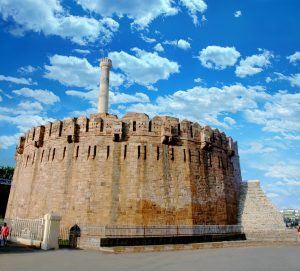 Kondareddy Burzu Kurnool
Kondareddy Burzu Kurnool
1.1. Architectural Highlights of Konda Reddy Buruzu
What are the key architectural features of Konda Reddy Buruzu?
The Konda Reddy Buruzu is known for its robust structure, reflecting the Vijayanagara architectural style. Key features include:
- Solid Stone Construction: The fort is primarily built with large stone blocks, ensuring durability and strength.
- Strategic Location: Situated at the center of Kurnool, it provided a vantage point for defense.
- Prison Cells: The fort includes prison cells that once held revolutionary figures like Konda Reddy.
- Watchtowers: These towers allowed for surveillance of the surrounding areas.
1.2. Historical Events Linked to Konda Reddy Buruzu
What significant historical events are associated with Konda Reddy Buruzu?
Konda Reddy Buruzu is linked to several historical events:
- Vijayanagara Empire: Built during the reign of Achyutha Devaraya, it stands as a testament to the empire’s architectural and strategic prowess.
- Prison for Revolutionaries: The fort served as a prison, notably holding Konda Reddy, a revolutionary figure who became a symbol of resistance.
- Local Folklore: The fort is steeped in local folklore, adding to its cultural significance and attracting history enthusiasts.
1.3. Planning Your Visit to Konda Reddy Buruzu
What should visitors know before visiting Konda Reddy Buruzu?
When planning a visit to Konda Reddy Buruzu, keep the following in mind:
- Location: It is centrally located in Kurnool, making it easily accessible.
- Timings: Check the opening hours as they may vary.
- Entry Fee: There might be a nominal entry fee for maintenance.
- Photography: Photography is generally allowed, but it’s good to confirm any restrictions.
- Local Guides: Hiring a local guide can enhance your experience by providing historical insights and anecdotes.
2. Discovering The Spiritual Essence of Mantralayam Temple
What is special about Mantralayam Temple and why should you visit?
Mantralayam Temple, located on the banks of the Tungabhadra River, approximately 90 kilometers from Kurnool, is renowned for the Jeevasamadhi of the Madhva saint Sri Raghavendra Swamy. This temple attracts thousands of devotees, particularly from South India, drawn by its spiritual significance and the serene atmosphere of the choultries and Sanskrit school.
2.1. Key Attractions Within Mantralayam
What are the main attractions to see in Mantralayam?
Within Mantralayam, visitors can explore several key attractions:
- Raghavendra Swamy Brindavan: The tomb where Sri Raghavendra Swamy entered alive, a major pilgrimage site.
- Panchamuki Anjaneya Swamy Temple: A temple dedicated to Lord Hanuman in his five-faced form.
- Venkateswara Swamy Temple: Another significant temple within the complex, dedicated to Lord Venkateswara.
2.2. Religious Importance and Rituals at Mantralayam
What religious rituals and practices are observed at Mantralayam?
Mantralayam is a hub of religious activity, with several rituals observed daily:
- Daily Pujas: Regular prayers and offerings are made to Sri Raghavendra Swamy.
- Special Occasions: Festivals and special events are celebrated with great fervor, drawing large crowds.
- Anna Dana: Free meals are provided to devotees, reflecting the temple’s commitment to charity.
2.3. Tips for Visiting Mantralayam
What practical tips should visitors consider when planning a trip to Mantralayam?
When planning a visit to Mantralayam:
- Accommodation: Book accommodations in advance, especially during peak seasons.
- Transportation: Regular bus services and private taxis are available from Kurnool. SIXT.VN offers reliable transportation services for a comfortable journey.
- Dress Code: Dress modestly when visiting the temple.
- Best Time to Visit: The cooler months (October to March) are ideal for visiting.
- Local Customs: Respect local customs and traditions while on the temple premises.
3. Experiencing The Natural Beauty Of Orvakallu Rock Garden
Why is Orvakallu Rock Garden a must-visit destination?
Orvakallu Rock Garden, situated 20 kilometers from Kurnool on National Highway 18, is a unique adventure destination showcasing stunning igneous rock formations. Spread across 1000 acres, this park, developed by Andhra Pradesh Tourism, allows visitors to trek through serpentine paths and enjoy nature’s splendor. It’s also a popular film shooting location, adding to its allure.
 Orvakallu Rock Gardens
Orvakallu Rock Gardens
3.1. Unique Geological Formations at Orvakallu
What makes the rock formations at Orvakallu so special?
The geological formations at Orvakallu are remarkable due to:
- Igneous Rocks: The park features unique igneous rock formations shaped over millions of years.
- Natural Sculptures: The rocks resemble natural sculptures, providing a visual treat.
- Hiking Trails: Well-maintained hiking paths allow visitors to explore the area and enjoy the scenery.
3.2. Adventure and Recreational Activities at Orvakallu
What adventure and recreational activities can visitors enjoy at Orvakallu?
Orvakallu offers a range of activities:
- Trekking: Serpentine paths are perfect for trekking enthusiasts.
- Photography: The rock formations provide excellent photo opportunities.
- Picnicking: Designated picnic spots allow families and friends to relax amidst nature.
- Film Shooting: The park’s unique landscape makes it a favorite for film shoots.
3.3. Planning Your Visit to Orvakallu
What should visitors consider when planning a trip to Orvakallu Rock Garden?
When planning your visit:
- Location: It is easily accessible via National Highway 18, about 20 kilometers from Kurnool.
- Best Time to Visit: The winter months (October to February) are ideal for comfortable exploration.
- Facilities: The park has basic amenities, but it’s wise to carry water and snacks.
- Footwear: Wear comfortable shoes for trekking.
- Transportation: Consider hiring a car or taxi for easy access. SIXT.VN offers reliable car rental services for a hassle-free trip.
4. Understanding The Historical Significance of Ashoka Rock Edicts
What are the Ashoka Rock Edicts and why are they important?
The Ashoka Rock Edicts, located near Erragudi village in Tuggali Mandal, feature inscriptions made by Emperor Ashoka in Black granite near Bramhalipi. These edicts are significant because they provide insights into Ashoka’s reign and his policies of Dhamma. Jonnagiri, formerly known as “SWARNAGIRI,” also falls under the rule of Emperor Ashoka, with 14 inscriptions situated in this location, making Yerraguidi a crucial archaeological site in South India.
4.1. Location and Accessibility of the Edicts
Where are the Ashoka Rock Edicts located and how can they be accessed?
The Ashoka Rock Edicts are situated:
- Location: Near Erragudi village in Tuggali Mandal, Kurnool district.
- Accessibility: The site is accessible by road. It is advisable to hire a local taxi or use private transport. SIXT.VN can arrange comfortable transportation for your visit.
- Nearby Landmarks: The edicts are located near the village, making it easy to combine a visit with local sightseeing.
4.2. Content and Importance of the Inscriptions
What do the inscriptions on the Ashoka Rock Edicts convey and why are they historically significant?
The inscriptions on the Ashoka Rock Edicts convey:
- Ashoka’s Policies: They outline Ashoka’s principles of Dhamma, promoting peace, non-violence, and moral conduct.
- Historical Significance: They provide valuable insights into the Mauryan Empire and Ashoka’s efforts to govern with compassion and justice.
- Archaeological Value: The inscriptions serve as primary sources for understanding ancient Indian history.
4.3. Tips for Visiting the Ashoka Rock Edicts
What should visitors keep in mind when planning a visit to the Ashoka Rock Edicts?
When planning a visit:
- Best Time to Visit: The cooler months (October to March) are ideal.
- Local Guides: Hire a local guide to understand the historical context and significance of the edicts.
- Respect the Site: Maintain the sanctity of the site and avoid touching the inscriptions.
- Photography: Confirm if photography is allowed and adhere to any guidelines.
- Transportation: Ensure reliable transportation as the site is located in a rural area. SIXT.VN provides dependable transportation services for a smooth visit.
5. Unveiling The Pre-Historic Art At Kethavaram Rock Paintings
What are the Kethavaram Rock Paintings and why are they significant?
Kethavaram, located about 16 kilometers southeast of Kurnool, is a vibrant pre-historic site that flourished between 10000 and 5000 BC. The Ketavaram rock site is considered one of the important prehistoric sites in the country. The group of pictures depicted the lifestyle of pre-historic man. The animals which found prominently among the figures are deer, stag, antelope, hyena, rabbit and reptiles.
 Kethavaram-kurnool
Kethavaram-kurnool
5.1. Characteristics of the Rock Paintings
What are the notable features and characteristics of the rock paintings at Kethavaram?
The rock paintings at Kethavaram are notable for:
- Ancient Art: They represent some of the oldest art forms in India, dating back thousands of years.
- Depictions of Daily Life: The paintings depict scenes of daily life, including hunting, gathering, and social activities.
- Animal Figures: Common motifs include animals such as deer, cattle, and birds.
- Natural Pigments: The paintings are created using natural pigments, showcasing the ingenuity of early humans.
5.2. Understanding the Pre-Historic Context of Kethavaram
How do the Kethavaram rock paintings contribute to our understanding of pre-historic life?
The Kethavaram rock paintings offer valuable insights into:
- Early Human Lifestyle: They provide a glimpse into the daily routines, social structures, and beliefs of pre-historic communities.
- Cultural Practices: The paintings reveal aspects of early human culture and artistic expression.
- Environmental Interaction: They illustrate how early humans interacted with their environment and utilized available resources.
5.3. Planning Your Visit to Kethavaram
What should visitors keep in mind when planning a visit to the Kethavaram rock painting site?
When planning a visit:
- Location: The site is located about 16 kilometers southeast of Kurnool.
- Accessibility: The site can be reached by road, but the final stretch might require a short trek. Consider hiring a reliable taxi service from SIXT.VN for comfortable travel.
- Best Time to Visit: The cooler months (October to March) are ideal for visiting.
- Local Guides: Engage a local guide to understand the significance of the paintings and the history of the site.
- Preservation: Help preserve the site by avoiding touching the paintings and following any guidelines provided by the local authorities.
6. Relaxing By The Scenic Ramjal Lake Adoni
What is the significance of Ramjal Lake in Adoni and why should visitors explore it?
Ramjal Lake in Adoni plays a crucial role in Hindu mythology, believed to have been formed by an arrow shot by Rama to provide water for Sita during Aranya Vaasa. The lake, fed by the Tungabhadra River, supplies drinking water to the town and serves as a tourist attraction with its diverse water birds, reflecting the Hindu influence over generations.
6.1. Mythological Significance of Ramjal Lake
What are the mythological stories associated with Ramjal Lake?
Ramjal Lake is steeped in mythology:
- Rama’s Arrow: Legend has it that Lord Rama shot an arrow into the ground to create the lake and provide water for Sita.
- Aranya Vaasa: The lake is associated with the period when Rama, Sita, and Lakshmana lived in the forest (Aranya).
- Hindu Influence: The lake’s existence is a testament to the deep-rooted Hindu influence in the region.
6.2. Natural Beauty and Birdwatching Opportunities
What natural attractions and birdwatching opportunities does Ramjal Lake offer?
Ramjal Lake is known for:
- Scenic Beauty: The lake provides a serene and picturesque environment, ideal for relaxation.
- Water Birds: The lake attracts a variety of water birds, making it a haven for birdwatchers.
- Tranquil Environment: The peaceful setting offers a respite from the hustle and bustle of city life.
6.3. Planning Your Visit to Ramjal Lake
What should visitors consider when planning a visit to Ramjal Lake?
When planning a visit:
- Location: The lake is located in Adoni, easily accessible by road.
- Best Time to Visit: The winter months (October to March) are ideal for pleasant weather and birdwatching opportunities.
- Activities: Enjoy a leisurely walk around the lake, indulge in birdwatching, or simply relax by the water.
- Transportation: Ensure reliable transportation to and from Adoni. SIXT.VN offers convenient car rental services for a comfortable journey.
7. Marveling At The Engineering Of Sunkesula Dam
What is the historical and engineering significance of Sunkesula Dam?
Sunkesula Dam, built in 1861 across the Tungabhadra River in Kurnool District, is one of the largest barrages in Andhra Pradesh. Renamed after Kotla Vijayabhaskar Reddy, a former Chief Minister, this dam divides Rayalaseema and Telangana. It attracts tourists and locals alike and is close to Sri Ranga Swamy Temple, Sri Raghavendra Swamy Brundavanam, Rajoli group of Temples, and Rajoli weavers society.
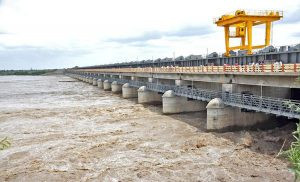 Sunkesula Dam kurnool
Sunkesula Dam kurnool
7.1. Historical Context and Construction of the Dam
What is the history behind the construction of Sunkesula Dam?
The historical context includes:
- Construction Era: Built in 1861, the dam showcases British engineering skills of the time.
- Purpose: It was built to provide irrigation and manage water resources in the region.
- Location: Situated between Sunkesula and Rajoli villages, the area was historically ruled by Vijayanagar Kings and Hyderabad Nawabs.
7.2. Architectural and Engineering Features
What are the key architectural and engineering features of Sunkesula Dam?
The dam is characterized by:
- Barrage Design: It is designed as a large barrage to control the flow of the Tungabhadra River.
- Road Across the Dam: A road crosses the dam, connecting Sunkesula and Rajoli, offering scenic views.
- Renaming: It was renamed after Kotla Vijayabhaskar Reddy, honoring his contributions to the region.
7.3. Planning Your Visit to Sunkesula Dam
What should visitors consider when planning a trip to Sunkesula Dam?
When planning a visit:
- Location: The dam is about 22 kilometers from Kurnool town.
- Accessibility: It is accessible by road. Hiring a car from SIXT.VN ensures a comfortable journey.
- Nearby Attractions: Combine your visit with nearby attractions like Sri Ranga Swamy Temple and Sri Raghavendra Swamy Brundavanam.
- Best Time to Visit: The monsoon and post-monsoon seasons (June to December) are ideal to see the dam with ample water flow.
8. Discovering The Irrigation Marvel Of Gajuladinne Project (GDP)
What is the Gajuladinne Project (GDP) and what purpose does it serve?
The Gajuladinne Project (GDP), renamed as Damodaram Sanjeevaiah Sagar, is a Medium Irrigation Project constructed across the Hundri River, a tributary of the Tungabhadra in the Krishna basin. Located near Gajuladinne village in Gonegandla Mandal of Kurnool District, it serves as a vital irrigation source for the region.
8.1. Purpose and Benefits of the Project
What are the primary purposes and benefits of the Gajuladinne Project?
The primary purposes and benefits include:
- Irrigation: It provides water for irrigating agricultural lands in the surrounding areas.
- Water Management: It helps in managing water resources and preventing floods.
- Agricultural Support: The project supports local agriculture and enhances crop production.
8.2. Engineering Aspects of GDP
What are the notable engineering aspects of the Gajuladinne Project?
The engineering aspects include:
- Medium Irrigation Project: It is designed to provide irrigation to a moderate area.
- Dam Construction: The dam is constructed across the Hundri River, utilizing modern engineering techniques.
- Water Storage: It has a reservoir for storing water, ensuring a continuous supply for irrigation.
8.3. Planning Your Visit to GDP
What should visitors know before visiting the Gajuladinne Project?
When planning a visit:
- Location: The project is located near Gajuladinne village in Gonegandla Mandal.
- Accessibility: It is accessible by road, but ensure you have reliable transportation. SIXT.VN offers car rental services for a hassle-free visit.
- Best Time to Visit: The post-monsoon season (October to December) is ideal to see the reservoir filled with water.
- Permission: Check if any permissions are required to visit the project site.
9. Immersing Yourself In History At The Kurnool Museum
What can visitors expect to see at the Kurnool Museum and why is it worth visiting?
Located near the Handri River in Budavarapupeta, the District Archaeological Museum in Kurnool, established in 1999, showcases stone sculptures from Srisailam dating back to the Chalukyan and Vijayanagara periods. The museum also features arms and weapons, paintings, inscriptions, pottery, and architectural pieces like door jambs and lintels.
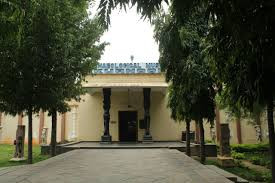 Kurnool– Museum
Kurnool– Museum
9.1. Key Artifacts and Collections
What are the main artifacts and collections housed in the Kurnool Museum?
The museum houses:
- Stone Sculptures: Sculptures from the Chalukyan and Vijayanagara periods retrieved from Srisailam.
- Arms and Weapons: A collection of historical arms and weapons.
- Paintings: Various paintings depicting local history and culture.
- Inscriptions: Ancient inscriptions providing insights into the region’s past.
- Pottery: Pottery artifacts showcasing ancient craftsmanship.
- Architectural Pieces: Door jambs and lintels from old structures.
9.2. Historical Significance of the Museum
Why is the Kurnool Museum historically significant?
The museum is historically significant because:
- Preservation of History: It preserves and showcases the historical and cultural heritage of the region.
- Educational Resource: It serves as an educational resource for students and history enthusiasts.
- Cultural Identity: It promotes awareness and appreciation of local history and culture.
9.3. Planning Your Visit to the Kurnool Museum
What should visitors consider when planning a visit to the Kurnool Museum?
When planning a visit:
- Location: The museum is located near the Handri River in Budavarapupeta, Kurnool.
- Accessibility: It is easily accessible by road. Use SIXT.VN for reliable transportation.
- Timings: Check the opening hours before visiting.
- Entry Fee: There might be a nominal entry fee.
- Photography: Confirm if photography is allowed.
10. Exploring The Fortified Walls Of Adoni Fort
What is the historical importance and architectural significance of Adoni Fort?
Adoni Fort is one of the largest forts in India, with fortification walls extending beyond 50 km. It served as a military base for the Vijayanagara Empire in the 15th century and was later taken over by the Bijapur Sultanate after the downfall of the Vijayanagara Empire.
10.1. Historical Background of Adoni Fort
What is the historical background of Adoni Fort?
The historical background includes:
- Vijayanagara Empire: It served as a crucial military base in the 15th century.
- Bijapur Sultanate: After the decline of the Vijayanagara Empire, it came under the control of the Bijapur Sultanate.
- Strategic Importance: The fort’s strategic location made it a key defensive structure.
10.2. Architectural Features of the Fort
What are the main architectural features of Adoni Fort?
The architectural features include:
- Extensive Fortifications: Walls running beyond 50 km, showcasing its massive scale.
- Strategic Design: Designed to provide robust defense against invaders.
- Historical Structures: Various structures within the fort reflect different periods of its history.
10.3. Planning Your Visit to Adoni Fort
What should visitors keep in mind when planning a visit to Adoni Fort?
When planning a visit:
- Location: Adoni is accessible by road and rail.
- Accessibility: The fort can be reached by road. Consider hiring a car from SIXT.VN for convenient transportation.
- Best Time to Visit: The cooler months (October to March) are ideal for exploring the fort.
- Local Guides: Engage a local guide to learn about the fort’s history and architecture.
- Exploration: Wear comfortable shoes as exploring the fort involves a lot of walking.
11. Visiting The Architectural Marvel Of Gol Gummaz, Kurnool
What is Gol Gummaz in Kurnool and why is it a significant historical site?
Gol Gummaz, also known as Abdul Wahab tomb, is located near Osmania College. Believed to have been constructed in 1618 after the death of Abdul Wahab, the military commander of the Bijapur army and the first Muslim ruler of Kurnool, it is a notable architectural landmark.
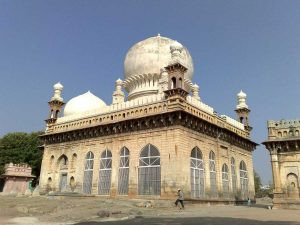 Gol Gummaj-knl
Gol Gummaj-knl
11.1. History and Construction of Gol Gummaz
What is the historical background and construction details of Gol Gummaz?
The historical background includes:
- Abdul Wahab: The tomb is dedicated to Abdul Wahab, a significant figure in Kurnool’s history.
- Construction Year: Believed to be constructed in 1618.
- Architectural Style: Reflects the architectural influences of the Bijapur Sultanate.
11.2. Key Features and Architectural Style
What are the architectural features that make Gol Gummaz unique?
The architectural features include:
- Large Dome: The structure is characterized by a large dome, typical of the period.
- Intricate Designs: The tomb features intricate designs and carvings.
- Historical Significance: It stands as a testament to the region’s rich historical past.
11.3. Planning Your Visit to Gol Gummaz
What should visitors keep in mind when planning a visit to Gol Gummaz?
When planning a visit:
- Location: Located near Osmania College in Kurnool.
- Accessibility: Easily accessible by road within Kurnool. Use SIXT.VN for reliable transport services.
- Best Time to Visit: The cooler months (October to March) are ideal.
- Photography: Confirm if photography is allowed inside the tomb.
- Respect the Site: Maintain the sanctity of the site and follow local guidelines.
12. Experiencing Nature At Nagaravanam (Gargeyapuram), Kurnool
What is Nagaravanam in Kurnool and what activities does it offer to visitors?
Nagaravanam, located in Gargeyapuram, Kurnool, is a project started in 2015 by the Forest Department, spanning 520 acres of forest land with an investment of 5 Crore. It offers facilities for cycling, trekking, and yoga, providing a natural retreat for visitors.
12.1. Development and Objectives of Nagaravanam
What are the development and objectives of the Nagaravanam project?
The development and objectives include:
- Forest Department Initiative: Developed by the Forest Department to promote eco-tourism.
- Eco-Friendly Tourism: Focuses on providing a natural environment for recreational activities.
- Conservation: Aims to conserve and enhance the local flora and fauna.
12.2. Recreational Activities Available
What recreational activities can visitors enjoy at Nagaravanam?
Nagaravanam offers:
- Cycling: Dedicated cycling tracks for enthusiasts.
- Trekking: Trails for trekking and nature walks.
- Yoga: Facilities for practicing yoga in a serene environment.
- Picnicking: Designated areas for picnics and relaxation.
12.3. Planning Your Visit to Nagaravanam
What should visitors consider when planning a visit to Nagaravanam?
When planning a visit:
- Location: Located in Gargeyapuram, Kurnool.
- Accessibility: Easily accessible by road. Consider hiring a car from SIXT.VN for a comfortable journey.
- Best Time to Visit: The cooler months (October to March) are ideal for outdoor activities.
- Facilities: Basic amenities are available, but carry water and snacks.
- Attire: Wear comfortable clothing and shoes suitable for outdoor activities.
13. Seeking Blessings At Sri Ranamandala Anjaneya Swamy Temple Adoni
What is the significance of Sri Ranamandala Anjaneya Swamy Temple in Adoni?
Sri Ranamandala Anjaneya Swamy sanctuary is on a slope and one needs to move around 600 stages to achieve the best. It is trusted this is where Anjaneya Swamy Killed devils in a war who are attempting to bother Lord Sree Rama’s rest. Henceforth this place got the name Rana Mandala, where Rana implies war and mandala implies local.
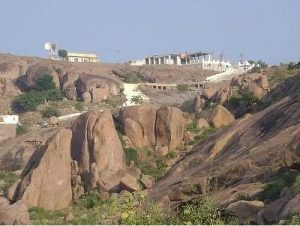 Sri Ranamandala Anjaneya Swamy Temple
Sri Ranamandala Anjaneya Swamy Temple
13.1. Religious Significance and Mythology
What is the religious significance and mythology associated with the temple?
The religious significance includes:
- Anjaneya Swamy: Dedicated to Lord Hanuman, also known as Anjaneya Swamy.
- Mythological Story: Believed to be the place where Hanuman killed demons who were disturbing Lord Rama’s meditation.
- Rana Mandala: Named after the war (Rana) and the local (Mandala), signifying the battleground.
13.2. Steps and Accessibility
What is the experience like climbing the steps to the temple?
The steps and accessibility involve:
- Steps to Climb: Approximately 600 steps to reach the temple.
- Scenic Views: Offers scenic views of the surrounding landscape.
- Devotional Experience: Climbing the steps is considered a part of the devotional journey.
13.3. Planning Your Visit to Sri Ranamandala Anjaneya Swamy Temple
What should visitors keep in mind when planning a visit to the temple?
When planning a visit:
- Location: Located on a hill in Adoni.
- Accessibility: Accessible by road to the base of the hill. Use SIXT.VN for comfortable transportation.
- Best Time to Visit: The cooler months (October to March) are ideal for climbing the steps.
- Physical Fitness: Be prepared for a climb of around 600 steps.
- Attire: Dress modestly when visiting the temple.
14. Praying At Jain Temple Peddatumbalam Adoni
What is unique about the Parasmani Parshwanath Jain Tirth in Peddatumbalam?
Parasmani Parshwanath Jain Tirth, located in Pedda Tumbalam near Adoni, features idols dating back to the 17th century, including Parswamani Parshwanath Bhagwan, Padmavati devi, and Nakoda Bhairav. Built in the Nallagonda Kolanupaka Jain temple style, it offers a serene pilgrimage site.
14.1. Historical and Religious Significance
What is the historical and religious importance of this Jain temple?
The significance includes:
- Ancient Idols: Houses idols dating back to the 17th century.
- Jain Tirth: A significant pilgrimage site for Jains.
- Deities: Dedicated to Parswamani Parshwanath Bhagwan, Padmavati devi, and Nakoda Bhairav.
14.2. Architectural Style
What architectural style is the temple built in?
The architectural style includes:
- Nallagonda Kolanupaka Style: Built in the style of the Nallagonda Kolanupaka Jain temple.
- Unique Design: Showcases unique Jain architectural elements.
- Tranquil Ambiance: Provides a peaceful and spiritual environment.
14.3. Planning Your Visit to Jain Temple Peddatumbalam
What should visitors consider when planning a visit to this Jain temple?
When planning a visit:
- Location: Located in Pedda Tumbalam near Adoni.
- Accessibility: Accessible by road. Consider hiring a car from SIXT.VN for a smooth journey.
- Best Time to Visit: The cooler months (October to March) are ideal.
- Dress Code: Dress modestly when visiting the temple.
- Respect the Site: Maintain the sanctity of the site and follow local customs.
15. Finding Solace At Yellarthi Dhargha
What is the significance of the Shaik Sha Vali Dargah in Ellarthi?
The Shaik Sha Vali Dargah in Ellarthi, Holagunda mandal, Kurnool, is a historical dargah with a 400-year spiritual and religious background. Dedicated to a revered Sufi saint, it serves as a place of worship and spiritual solace for many.
 Yellarthi dharga
Yellarthi dharga
15.1. Historical and Spiritual Background
What is the history and spiritual significance of the dargah?
The background includes:
- Shaik Sha Vali: Dedicated to a revered Sufi saint.
- 400-Year History: Has a spiritual and religious history spanning 400 years.
- Spiritual Solace: Provides a place for spiritual reflection and solace.
15.2. Religious Importance and Practices
What religious practices are observed at the dargah?
Religious practices include:
- Worship: A place of worship for people of all faiths.
- Prayers: Prayers and offerings are made to honor the Sufi saint.
- Festivals: Celebrates various festivals and religious events.
15.3. Planning Your Visit to Yellarthi Dhargha
What should visitors keep in mind when planning a visit to Yellarthi Dargah?
When planning a visit:
- Location: Located in Ellarthi, Holagunda mandal, Kurnool.
- Accessibility: Accessible by road. Use SIXT.VN for reliable transportation services.
- Best Time to Visit: The cooler months (October to March) are ideal.
- Dress Code: Dress modestly when visiting the dargah.
- Respect the Site: Maintain the sanctity of the site and follow local customs.
16. Discovering The Divine Urukunda Eranna Swamy Temple
What is special about the Urukunda Errana Swamy temple and why should you visit?
Urukunda Errana Swamy temple is a famous temple in the Urukunda village of Kowthalam mandalam, Kurnool district, located 125 km from Kurnool and 50 km from Adhoni. It is a combination of Hari Hara (Lord Lakshmi Narasimha Swamy & Lord Shiva), called Lakshmi Narasimha Swamy for Vyshnavas and Veerana Swamy for Shaivas.
16.1. Religious Significance and Deities
What are the primary deities worshipped at the Urukunda Eranna Swamy Temple?
The deities include:
- Hari Hara: The temple is a combination of Lord Vishnu (Lakshmi Narasimha Swamy) and



